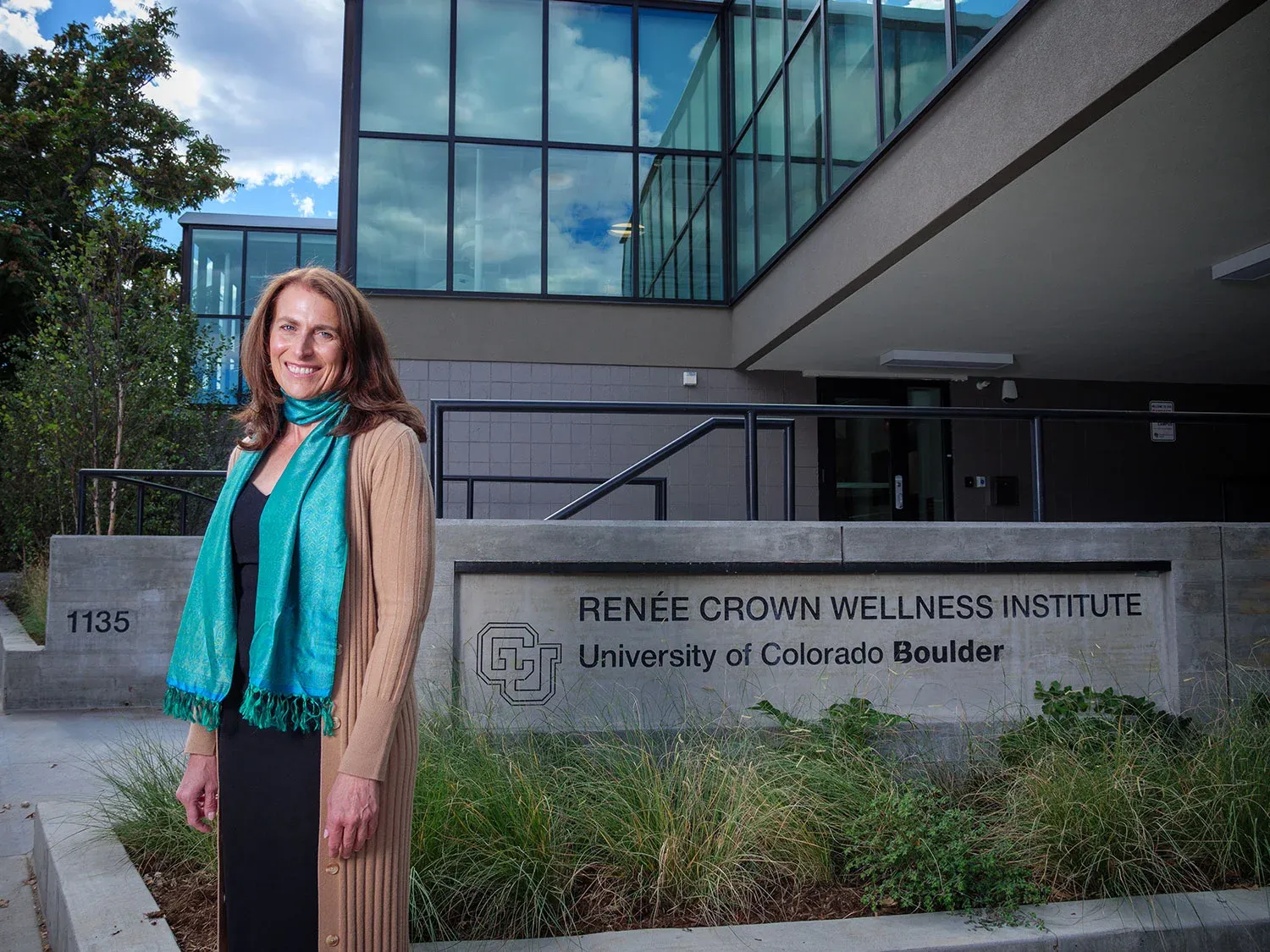
A Vision for Mental Health and Wellness

As director of the Renée Crown Wellness Institute, Sona Dimidjian is helping CU Boulder create a healthier future for the next generation of student leaders. Established in 2019, the institute is dedicated to research and practices that support mental, social and emotional wellness for children and young people, as well as the adults and systems that support them. Here Dimidjian discusses how the Crown Institute is taking action to support these communities.
What does the landscape of mental health look like right now for young people?
Challenges with mental health and wellness among kids and young people are not new. In particular, the lack of access to resources that promote and protect their mental health and wellness has been a problem for decades.
This has been amplified during the pandemic, particularly with an awareness that individual mental health and wellness intersect with contemporary and historical realities of injustice, inequality and racism. The stressors that young people experience and the challenges to accessing support have become increasingly evident and visible over the past two and a half years.
What are some of the challenges that students on college campuses are facing?
For students who have been in college during the past few years, cultivating a sense of place, purpose and belonging has become really important. There have been clear increases in the need for mental health services and an interest in learning skills and knowledge that are relevant to coping with these very real, everyday challenges. The university has a clear role in this regard.
What’s important now is recognizing the incredible creativity and vision that young people hold — and their capacity to be critical and instrumental partners in addressing the challenges that are present in their lives and our world.
What is the vision of the Renée Crown Wellness Institute?
The Crown Institute is dedicated to building a world where every young person thrives. That means being supported by both caring relationships and inner resources. It also means advancing work that’s focused on the mental health and wellness of kids and young people, as well as the adults and systems in their lives.
The Crown Institute is dedicated to building a world where every young person thrives.
How is the institute addressing these challenges to mental health and wellness?
The institute has three primary strands of research, defined by our research partnerships: One strand involves partnering with kids and young people as members of our research teams, facilitators of programs and more. The second strand focuses on partnerships with parents and community members, and the third focuses on partnerships with educators and schools.
This year, the Crown Institute is also launching more outreach and education efforts — we are actively focusing on ways we can bring the learning, programs and practices from our research studies more broadly into the world. Those include the delivery of programs, interdisciplinary collaborations on campus and public-facing speakers and events.
One of the central tenets of the Crown Institute is its focus on research-practice partnerships. Tell us about that.
Research-practice partnerships are built on a model where researchers, families, educators, young people and community members work together as equal partners. Establishing partnerships with the intention of creating an enduring relationship is a recognition that these challenges deserve time to address comprehensively and effectively.
For the work we’re doing to truly have meaningful benefit in people’s lives, it needs to be collaborative from the very beginning to the very end. That’s what we mean by partnership: mutual benefit and reciprocity, shared decision-making and understanding.
Perhaps most importantly, no one person or entity holds all of the knowledge or expertise that is required to provide lasting or transformative benefit. It requires multiple perspectives working together.
Who are some of your key community partners in this work?
We have active studies with Boulder Valley School District, Roaring Fork School District and Denver Public Schools. We also have a long-standing partnership with El Centro AMISTAD — an organization promoting health equity, education and quality of life for Latino communities in Boulder County — and we’ve worked in different ways with Valley Settlement in the Roaring Fork Valley, a nonprofit organization serving immigrant families. Of course, we also partner with many departments and units across the CU Boulder campus.
Students ask the hard questions, the big questions, the important questions. They’re open to hearing multiple perspectives and engaging with those in ways that are both critical and creative.
What’s it like conducting research alongside students?
In working alongside CU students, I’ve found that they ask the hard questions, the big questions, the important questions. They’re open to hearing multiple perspectives and engaging with those in ways that are both critical and creative. And they have an incredible passion and energy for this work, and a willingness to not look away from the challenges — while also holding optimism for the future and what’s possible. Engaging with students is critical to ensuring our work is relevant, actionable and impactful.
Why do you choose to do this work?
I have always been committed to doing work that will benefit others. I think there’s an ethical imperative as part of the scientific endeavor, and I believe part of being a public institution is being truly dedicated to the welfare of the public good and to the health and wellness of our communities — both here on campus and more broadly in our region and our state. I think the learning that can come from this work has far-reaching implications for our country and world. I do this work because I love it and because I have a deep sense of purpose about its importance. We each have a short time on this planet! I believe in using that time to make the world a better place.
Photo by Patrick Campbell

